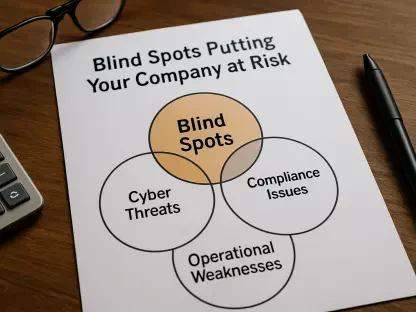As technological advancements reshape the digital landscape, cybersecurity threats evolve in tandem, becoming more insidious and multifaceted. Today’s attackers leverage cutting-edge tactics, making them harder to detect amidst routine digital operations. Understanding these shadowy cyber threats is crucial for staying ahead in a world where digital interactions dominate. This article compiles insights from various experts, illustrating the nuances of these often-overlooked perils.
The Invisible Menace: Understanding Cyber Threats
Over the past decades, cybersecurity threats have undergone significant transformation. Initial threats were overt, easily identifiable intrusions that attackers used straightforwardly, but the current landscape is marked by stealthy, complex maneuvers that escape easy detection. Recognizing the subtle nature of these risks becomes pressing in this context.
In exploring these risks, it’s crucial to consider how easily they can be obscured within mundane digital activities. Modern threats often exploit system blind spots, moving quietly through networks without triggering alarms. As we delve deeper, the underestimated dangers of today’s cybersecurity failures come to light, offering a broader view of the measures needed for effective defense.
The Unseen Epidemic: Silent Cyber Intrusions
Digital intruders now capitalize on the mundane to avoid raising suspicions, seamlessly integrating malicious actions within regular system operations. This approach makes it exceptionally challenging for defenders to pinpoint anomalies in otherwise familiar activities.
Data reveals a troubling pattern: significant breaches remain undetected for extended periods, posing severe risks to organizational security and data integrity. As the frequency of these undetected incidents rises, questions emerge about the current strategies and tools used to identify and counteract such stealthy activities. Evaluating the proficiency of these defenses remains essential.
Shadows in the Network: Approaching the Invisible Threat
To combat these elusive threats, leading organizations are redefining their cybersecurity frameworks. Innovative strategies now emphasize the importance of detecting subtle signs of infiltration and addressing system vulnerabilities that could be exploited.
Rethinking cybersecurity training to heighten awareness of these vulnerabilities marks a pivotal shift in the approach, balancing the growth of digital ecosystems with the inherent risks of technological advancement. This delicate balance is essential, ensuring that innovations in security do not inadvertently open new avenues for exploitation.
Beyond Visibility: Emerging Threat Landscapes
Advanced persistent threats (APTs) represent a new frontier in cybersecurity challenges, influencing security protocols worldwide. Different regions have responded with varied strategies, reflecting a global awakening to these sophisticated threats.
Traditional security models, focused on visible risks, must evolve. Innovative paradigms that consider the intricacies of modern digital environments are necessary. This evolution prompts organizations to reassess their cybersecurity strategies continuously, integrating new insights into competitive global landscapes.
New Dimensions of Security: The Next Frontier
Cross-industry collaborations provide fertile ground for developing avant-garde cybersecurity practices. These collaborations breed innovative solutions, emphasizing the importance of collective defense against pervasive threats.
Expert prognostications regarding future challenges highlight potential game-changers, underscoring the perpetual need for vigilance. Maintaining coherence with past insights, these foresights provide a roadmap for adapting to an ever-shifting threat landscape.
Illuminating Blind Spots: Strategic Responses
Recognizing and defusing hidden cyber threats requires an arsenal of strategies. Employing data analytics and machine learning can significantly bolster detection capabilities, empowering individuals and organizations to preempt security breaches before they materialize.
Taking a proactive stance, businesses can incorporate these strategies into their cybersecurity policies. This foresight ensures robustness and resilience against ever-evolving threats, promoting a security-conscious culture across all operational layers.
Looking Ahead: Ensuring Vigilance in Cybersecurity
The exploration of concealed cybersecurity challenges highlights the ongoing importance of robust security protocols. As digital threats continue to evolve, the emphasis shifts to developing future practices that address these emerging challenges effectively.
Past explorations in this area have shown that a proactive and thorough understanding of cybersecurity intricacies is invaluable. With the landscape eternally shifting, adapting security measures remains critical. Addressing the unseen will redefine engagement in cybersecurity, laying the foundation for a more secure digital future.









